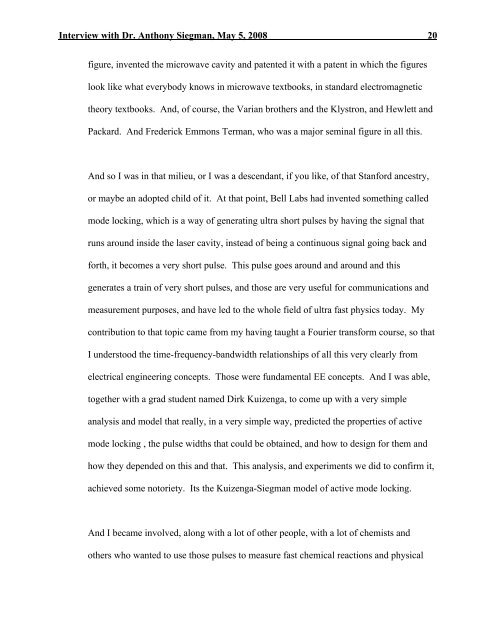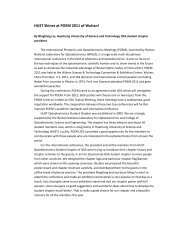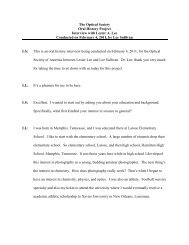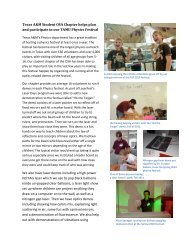The Optical Society Oral History Project Interview with ... - OSA
The Optical Society Oral History Project Interview with ... - OSA
The Optical Society Oral History Project Interview with ... - OSA
You also want an ePaper? Increase the reach of your titles
YUMPU automatically turns print PDFs into web optimized ePapers that Google loves.
<strong>Interview</strong> <strong>with</strong> Dr. Anthony Siegman, May 5, 2008 20<br />
figure, invented the microwave cavity and patented it <strong>with</strong> a patent in which the figures<br />
look like what everybody knows in microwave textbooks, in standard electromagnetic<br />
theory textbooks. And, of course, the Varian brothers and the Klystron, and Hewlett and<br />
Packard. And Frederick Emmons Terman, who was a major seminal figure in all this.<br />
And so I was in that milieu, or I was a descendant, if you like, of that Stanford ancestry,<br />
or maybe an adopted child of it. At that point, Bell Labs had invented something called<br />
mode locking, which is a way of generating ultra short pulses by having the signal that<br />
runs around inside the laser cavity, instead of being a continuous signal going back and<br />
forth, it becomes a very short pulse. This pulse goes around and around and this<br />
generates a train of very short pulses, and those are very useful for communications and<br />
measurement purposes, and have led to the whole field of ultra fast physics today. My<br />
contribution to that topic came from my having taught a Fourier transform course, so that<br />
I understood the time-frequency-bandwidth relationships of all this very clearly from<br />
electrical engineering concepts. Those were fundamental EE concepts. And I was able,<br />
together <strong>with</strong> a grad student named Dirk Kuizenga, to come up <strong>with</strong> a very simple<br />
analysis and model that really, in a very simple way, predicted the properties of active<br />
mode locking , the pulse widths that could be obtained, and how to design for them and<br />
how they depended on this and that. This analysis, and experiments we did to confirm it,<br />
achieved some notoriety. Its the Kuizenga-Siegman model of active mode locking.<br />
And I became involved, along <strong>with</strong> a lot of other people, <strong>with</strong> a lot of chemists and<br />
others who wanted to use those pulses to measure fast chemical reactions and physical







